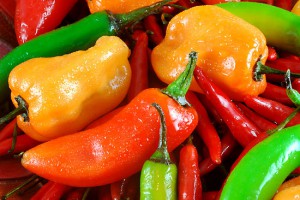Spinal cord injuries are among the most serious and life-altering injuries a person can sustain. The spinal cord, a complex bundle of nerves, is the primary pathway for communication between the brain and the rest of the body. When it’s damaged, a patient could be...
People who suffer from varicose veins, chronic venous insufficiency (CVI), and other related health conditions know that their symptoms involve more than just cosmetic concerns. They also frequently cause pain, swelling, and more serious health problems. For these...
Our smartphones, tablets, and laptops have connected us to the world in ways that we could never have imagined. We carry our offices, our social lives, and our entertainment with us everywhere we go. But this constant connectivity often comes with a trade-off, one...
5 Foods That Can Help with Interventional Pain Management

Although there are a number of pharmaceutical products for alleviating pain, these often come with a range of unpleasant side effects and many have addictive qualities. More importantly, most pain medications merely mute symptoms and do little to address the underlying causes of patient issues. Fortunately, there are a number of all-natural foods that can provide significant pain relief. Moreover, they can do this absent of side effects and while helping to resolve underlying health issues. Following are five foods that can help with pain management.
Turmeric
Turmeric is a primary spice in curry dishes. It is also a highly effective anti-inflammatory due to a substance it contains called curcumin. This spice has long been a part of Ayurvedic medicine given its ability to aid digestion and alleviate various forms of discomfort. Tumeric guards against joint inflammation and tissue destruction. It also protects the functioning of nerve cells. This spice can be added to curry dishes or simply sprinkled on soups, salads and cooked grains or vegetables. To ensure optimal potency, pain sufferers should make sure to add a few dashes of black pepper to their dishes as well. The curcumin in tumeric is fully released from the spice by an agent called piperine in black pepper.
Mint
Mint is often used as a natural remedy for mild nausea and is a great herb for freshening the breath. What few people know, however, is that it is also good for reducing the frequency and intensity of muscle spasms. Chewing several leaves can alleviate the discomfort of Irritable Bowel Syndrome and rubbing the leaves of this plant on the temples and wrists can reduce the intensity and severity of chronic headaches.
Hot Peppers
Spicy peppers contain an ingredient known as capsaicin. This stimulates nerve endings while reducing the chemicals that transmit pain signals to the brain. Hot pepper flakes or cayenne powders can be sprinkled on soups, salads and other dishes. Red peppers, particularly cayenne, also have a near-instant impact on blood pressure levels and thus, hot peppers are good for alleviating headaches that are caused by high blood pressure.
Ginger
Ginger is a highly effective remedy for arthritis, nausea, seasickness and other ailments. Its anti-inflammatory properties make ginger an excellent, all-natural form of headache relief. Fresh ginger can be chopped and steeped in hot water to make a potent tea or simply added to dishes like stir-fry. While headache relief can be near-instant, those who suffer from chronic arthritis pain should consume ginger on a daily basis with the expectation of experiencing in marked and long-lasting improvements within several weeks or months.
Fatty Fish
Sardines, salmon and herring are all great foods to eat when struggling with neck, back and shoulder pain. The Omega-3 Fatty Acids these fish contain reduce inflammation in the blood vessels and nerves. By doing so, they allow for more optimal blood flow. Blood vessels that lie at the edge of the spinal discs are responsible for transferring essential nutrients to these discs. With optimal circulation in this area, disc degeneration is far less likely to occur and disc-related injuries have a much better opportunity to heal.
One of the most vital aspects of orthopaedic care is simply discovering the right pain management techniques. The best pain management plan will not only relieve a patient’s discomfort, but it will also facilitate the healing of targeted injuries. Thus, rather than merely muting symptoms, it is far better to make a few strategic, dietary changes that will provide both relief and in improvements in the underlying issue.




